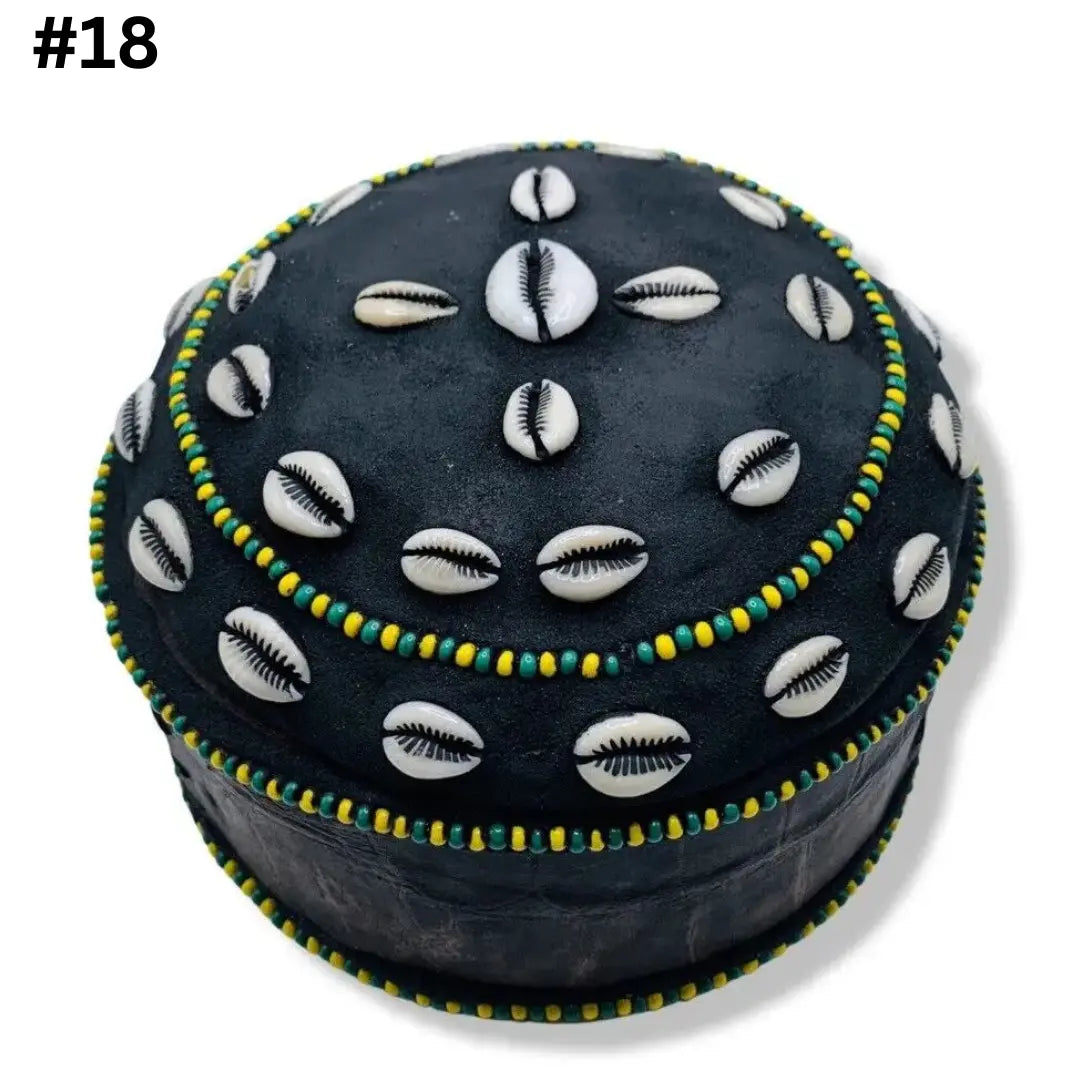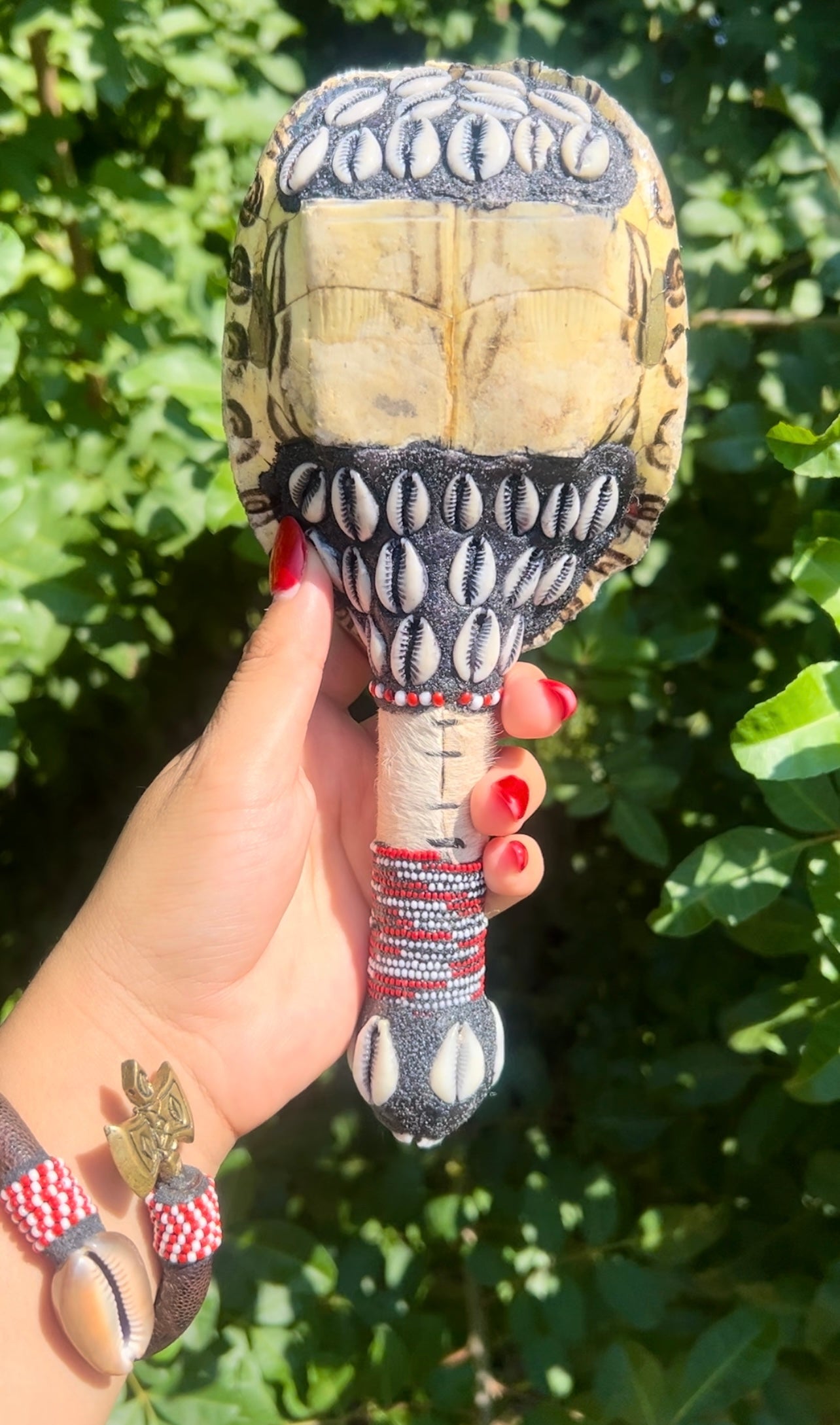Who Do Santería Practitioners Pray To?
Santería is a rich and complex religion that blends elements of Yoruba spirituality from West Africa with Roman Catholicism. Central to the practice of Santería is the act of prayer, which connects practitioners with a range of spiritual entities. Each of these entities plays a vital role in the religious and daily lives of Santería followers. This article will explore who Santería practitioners pray to and the significance of these prayers in their spiritual practices.
Outline of the Article
-
Introduction
- Overview of Santería and its focus on prayer
- Importance of understanding the spiritual entities in Santería
-
Olodumare: The Supreme Being
- Who is Olodumare?
- The role of Olodumare in Santería
- How practitioners pray to Olodumare
-
The Orishas: Divine Intermediaries
- Introduction to the Orishas
- The significance of the Orishas in daily life
- Examples of major Orishas and their domains
-
Praying to Eleguá: The Opener of Doors
- Who is Eleguá?
- Eleguá’s role in Santería
- How and when practitioners pray to Eleguá
-
Praying to Obatalá: The Orisha of Wisdom and Purity
- Who is Obatalá?
- Obatalá’s attributes and significance
- Prayers and rituals associated with Obatalá
-
Praying to Changó: The God of Thunder and War
- Who is Changó?
- Changó’s influence on power and justice
- How practitioners honor Changó
-
Praying to Oshun: The Goddess of Love and Fertility
- Who is Oshun?
- The role of Oshun in matters of love and prosperity
- Prayers and offerings to Oshun
-
Praying to Yemayá: The Mother of All Orishas
- Who is Yemayá?
- Yemayá’s association with the ocean and motherhood
- Rituals and prayers dedicated to Yemayá
-
Praying to Ancestors: Honoring the Egun
- The role of ancestor worship in Santería
- How practitioners honor and pray to their ancestors
- The connection between the living and the dead
-
Syncretism with Catholic Saints
- The blending of Orishas with Catholic saints
- How this syncretism influences prayer practices
- Examples of Orisha and saint pairings
-
The Role of Prayer in Santería Rituals
- How prayer is integrated into rituals
- The importance of regular prayer in maintaining spiritual balance
- Examples of common prayers in Santería
-
The Importance of Ashe in Prayer
- What is Ashe?
- How Ashe influences the effectiveness of prayers
- Ways to cultivate Ashe through prayer
-
Community Prayer and Collective Rituals
- The power of collective prayer in Santería
- Examples of communal rituals involving prayer
- The role of music and dance in collective prayer
-
How to Start Praying in Santería
- Steps for beginners to begin praying in Santería
- The importance of guidance from a godparent
- Simple prayers to start with
-
Conclusion
- Recap of the key spiritual entities in Santería prayer
- The significance of prayer in the daily life of a practitioner
-
FAQs
- Can anyone pray to the Orishas, or do you need to be initiated?
- What is the most important Orisha in Santería?
- How do I know which Orisha to pray to for specific needs?
- Can Santería prayers be combined with other religious prayers?
- How often should a practitioner pray in Santería?
Introduction
Santería, a religion rich in tradition and spiritual depth, places a strong emphasis on prayer as a means of connecting with the divine. Through prayer, practitioners of Santería communicate with a variety of spiritual entities, each of whom plays a specific role in guiding, protecting, and blessing the lives of those who seek their favor. Understanding who to pray to and the significance of these prayers is essential for anyone interested in Santería, whether you’re a newcomer or a seasoned practitioner.
Olodumare: The Supreme Being
Who is Olodumare?
Olodumare is considered the Supreme Being in Santería, the source of all creation and the ultimate authority over the universe. Unlike the Orishas, Olodumare is not actively involved in the day-to-day affairs of humans but is revered as the omnipotent force that governs all existence.
The Role of Olodumare in Santería
While Olodumare is the highest deity in Santería, direct worship and prayers to Olodumare are rare. Instead, Olodumare is acknowledged in prayers and rituals as the source of all Ashe, the spiritual energy that flows through everything. When practitioners pray to Olodumare, it is usually for blessings on a grand scale, such as health, prosperity, or guidance for the entire community.
How Practitioners Pray to Olodumare
Prayers to Olodumare are typically made during important ceremonies or when invoking the Orishas. These prayers are often solemn and respectful, recognizing Olodumare’s supreme power and asking for the overarching blessings that only Olodumare can bestow.
The Orishas: Divine Intermediaries
Introduction to the Orishas
The Orishas are the primary deities in Santería, each governing specific aspects of nature, human life, and the spiritual world. There are hundreds of Orishas, but a select few are central to the practice of Santería. These divine beings act as intermediaries between humans and Olodumare, making them the focus of most prayers and rituals.
The Significance of the Orishas in Daily Life
Orishas play an active role in the daily lives of Santería practitioners. Each Orisha has its own personality, strengths, and preferences, and practitioners develop personal relationships with the Orishas that align with their needs and circumstances. Prayers to the Orishas are specific and targeted, seeking their intervention in matters related to their domain, such as love, justice, health, or wealth.
Examples of Major Orishas and Their Domains
- Eleguá: The Orisha of crossroads, decisions, and fate.
- Obatalá: The Orisha of wisdom, purity, and creation.
- Changó: The Orisha of thunder, war, and justice.
- Oshun: The Orisha of love, fertility, and rivers.
- Yemayá: The Orisha of the sea and motherhood.
Praying to Eleguá: The Opener of Doors
Who is Eleguá?
Eleguá is one of the most important Orishas in Santería, known as the guardian of crossroads and the opener of doors. He is often the first Orisha invoked in any ritual because he controls the paths of fate and the ability to communicate with other Orishas.
Eleguá’s Role in Santería
Eleguá is associated with decisions, opportunities, and changes in life. As the opener of doors, he is called upon to remove obstacles and to grant access to new possibilities. Practitioners pray to Eleguá when they need guidance in making decisions or when they seek to open new paths in their lives.
How and When Practitioners Pray to Eleguá
Prayers to Eleguá are often made at the beginning of any ritual or ceremony, as his permission is required to proceed with other spiritual activities. Offerings of candy, toys, and small objects are made to Eleguá, reflecting his child-like nature. Practitioners may also pray to Eleguá at crossroads or doorways, symbolizing his control over paths and choices.
Praying to Obatalá: The Orisha of Wisdom and Purity
Who is Obatalá?
Obatalá is revered as the Orisha of wisdom, purity, and creation. He is often associated with peace, justice, and compassion, and is considered the father of all Orishas. Obatalá is depicted as an elderly figure, representing wisdom and experience.
Obatalá’s Attributes and Significance
Obatalá is associated with the mind, consciousness, and clarity of thought. He is called upon for matters of justice, peace, and purity. Practitioners pray to Obatalá for guidance in making fair decisions, for protection against evil, and for maintaining mental and spiritual clarity.
Prayers and Rituals Associated with Obatalá
Prayers to Obatalá are often made in times of need for wisdom or when seeking to resolve conflicts peacefully. Offerings to Obatalá typically include white foods and beverages, such as milk, coconut, and rice
, as well as white cloth or flowers, symbolizing purity and peace. Rituals dedicated to Obatalá are conducted with great respect and are often focused on bringing calm and balance to situations that require justice or compassion.
Praying to Changó: The God of Thunder and War
Who is Changó?
Changó is one of the most powerful and popular Orishas in Santería, known as the god of thunder, lightning, fire, and war. He is also associated with male virility, dance, and music. Changó is often depicted as a strong, regal figure, embodying the qualities of power, passion, and justice.
Changó’s Influence on Power and Justice
Changó is invoked when strength, courage, and justice are needed. He is seen as a protector of the oppressed and a punisher of those who act unjustly. Practitioners pray to Changó when they seek justice, protection from enemies, or empowerment in challenging situations. Changó is also called upon to help resolve disputes and to bring victory in battles, whether they are physical, legal, or personal.
How Practitioners Honor Changó
Prayers to Changó are often accompanied by offerings of red apples, bananas, red wine, and spicy foods. Drumming, dancing, and singing are central to rituals dedicated to Changó, as these activities resonate with his energetic and fiery nature. Practitioners may also light candles in his honor, particularly red and white ones, symbolizing his connection to fire and purity.
Praying to Oshun: The Goddess of Love and Fertility
Who is Oshun?
Oshun is the Orisha of love, fertility, beauty, and fresh waters. She is often depicted as a sensual and nurturing figure, associated with the rivers and streams that bring life and abundance. Oshun is also seen as a protector of women and children, and she is revered for her ability to bring joy, love, and prosperity into the lives of her followers.
The Role of Oshun in Matters of Love and Prosperity
Practitioners pray to Oshun for help in matters of love, romance, and relationships. She is also called upon to aid in fertility, childbirth, and the well-being of children. Additionally, Oshun is associated with wealth and abundance, making her a key figure in prayers for prosperity and success. Her influence extends to the arts, beauty, and anything that involves creativity and joy.
Prayers and Offerings to Oshun
Prayers to Oshun are often accompanied by offerings of honey, cinnamon, oranges, and sweet treats, reflecting her sweet and nurturing nature. Yellow flowers, jewelry, and perfumes are also offered to Oshun, symbolizing her connection to beauty and luxury. Rituals for Oshun are typically conducted near fresh water, such as rivers or streams, to honor her dominion over these natural elements.
Praying to Yemayá: The Mother of All Orishas
Who is Yemayá?
Yemayá is the Orisha of the sea and motherhood, often considered the mother of all Orishas and the protector of women, especially mothers. She embodies the nurturing and protective aspects of motherhood, as well as the vast and powerful nature of the ocean. Yemayá is deeply revered for her wisdom, strength, and the life-giving properties of water.
Yemayá’s Association with the Ocean and Motherhood
Yemayá is called upon in matters related to motherhood, fertility, and the protection of children. She is also invoked for emotional healing, as her calming and nurturing presence is believed to soothe pain and bring comfort. Practitioners pray to Yemayá for guidance and support in family matters, and to receive her blessings in times of emotional turmoil.
Rituals and Prayers Dedicated to Yemayá
Prayers to Yemayá are often made at the seashore, where practitioners offer her gifts such as seashells, fish, and white flowers. Blue and white candles are lit in her honor, symbolizing the colors of the ocean and purity. Rituals for Yemayá may also include the pouring of water as an offering and the recitation of prayers that ask for her protection, especially during childbirth or when seeking her guidance in family matters.
Praying to Ancestors: Honoring the Egun
The Role of Ancestor Worship in Santería
In Santería, ancestors (known as Egun) play a crucial role in the spiritual lives of practitioners. Ancestor worship is a central practice, as it is believed that the spirits of deceased loved ones continue to influence the lives of the living. These ancestors are honored and prayed to for guidance, protection, and blessings.
How Practitioners Honor and Pray to Their Ancestors
Practitioners of Santería often set up altars dedicated to their ancestors, where they make offerings such as food, drinks, and personal items that were significant to the deceased. Prayers to the ancestors are typically focused on asking for their protection, wisdom, and guidance in daily life. These prayers are an important way to maintain a connection with one’s lineage and to ensure that the ancestors continue to watch over their descendants.
The Connection Between the Living and the Dead
Santería teaches that the living and the dead are closely connected, and that maintaining a good relationship with one’s ancestors is essential for spiritual well-being. Regular prayers and offerings to the ancestors help to keep this connection strong, ensuring that the ancestors’ Ashe continues to flow into the lives of their descendants, providing protection and guidance.
Syncretism with Catholic Saints
The Blending of Orishas with Catholic Saints
One of the unique aspects of Santería is its syncretism with Roman Catholicism, where Orishas are often associated with Catholic saints. This blending of beliefs occurred as a result of the historical context in which enslaved Africans in the Americas were forced to adopt Christianity, but they preserved their traditional practices by associating their Orishas with Catholic saints.
How This Syncretism Influences Prayer Practices
Because of this syncretism, many Santería practitioners incorporate Catholic prayers, symbols, and rituals into their practices. For example, they might pray to an Orisha using the name of the corresponding Catholic saint or include elements of Catholic liturgy in their ceremonies. This blending allows practitioners to honor both their African heritage and the Christian influences that have shaped their religion.
Examples of Orisha and Saint Pairings
- Eleguá is often associated with Saint Anthony of Padua.
- Obatalá is linked with Our Lady of Mercy or Jesus Christ.
- Changó is syncretized with Saint Barbara.
- Oshun is associated with Our Lady of Charity.
- Yemayá is linked with Our Lady of Regla.
The Role of Prayer in Santería Rituals
How Prayer is Integrated into Rituals
Prayer is a central element in almost all Santería rituals. Whether performed individually or in groups, prayers are used to invoke the Orishas, seek their guidance, and ask for their blessings. These prayers are often recited in conjunction with offerings, sacrifices, and other ritual elements to ensure that the spiritual work being done is effective.
The Importance of Regular Prayer in Maintaining Spiritual Balance
Regular prayer is essential in Santería for maintaining spiritual balance and keeping a strong connection with the Orishas and ancestors. Daily prayers, along with periodic rituals and ceremonies, help practitioners stay aligned with the spiritual forces that guide their lives. This consistent practice is believed to cultivate Ashe, attracting positive energy and blessings into the practitioner’s life.
Examples of Common Prayers in Santería
Common prayers in Santería might include invocations to specific Orishas for help with particular issues, blessings for protection and health, or prayers of gratitude for the blessings already received. These prayers are often spoken in a mixture of Yoruba, Spanish, and other languages that reflect the cultural diversity of Santería.
The Importance of Ashe in Prayer
What is Ashe?
Ashe is the spiritual energy or life force that permeates the universe in Santería. It is the power that enables the Orishas to influence the world and the force behind all prayers and rituals. Cultivating and maintaining Ashe is central to the practice of Santería, as it is through Ashe that prayers are answered and spiritual work is accomplished.
How Ashe Influences the Effectiveness of Prayers
The effectiveness of prayers in Santería is believed to be directly related to the Ashe of the practitioner, the ritual, and the offerings made. When prayers are offered with sincerity, respect, and the proper rituals, they are more likely to be answered because they carry a strong flow of Ashe. Practitioners also seek to align their lives with the principles of Ashe, ensuring that their actions, thoughts, and intentions are in harmony with the spiritual world.
Ways to Cultivate Ashe Through Prayer
To cultivate Ashe through prayer, practitioners focus on living a life of good character, performing regular rituals and offerings, and maintaining strong relationships with the Orishas and their ancestors. Prayers are made with a clear mind and heart, often accompanied by acts of charity, community involvement, and other actions that generate positive energy.
Community Prayer and Collective Rituals
The Power of Collective Prayer in Santería
Collective prayer in Santería, such as during festivals, ceremonies, and group rituals, is believed to have a powerful effect because it combines the Ashe of all participants. This collective energy enhances the effectiveness of the prayers and rituals, often resulting in more significant spiritual outcomes.











